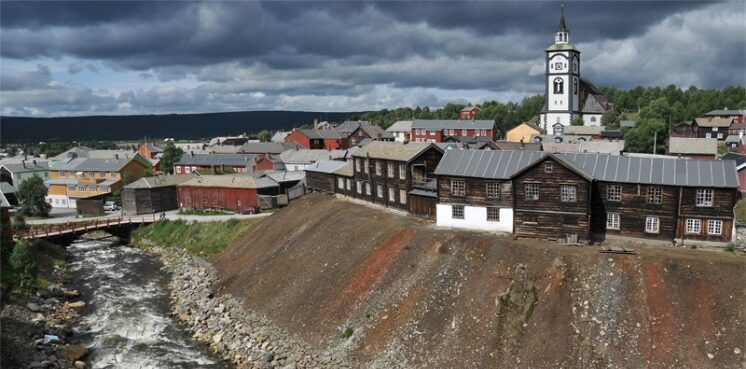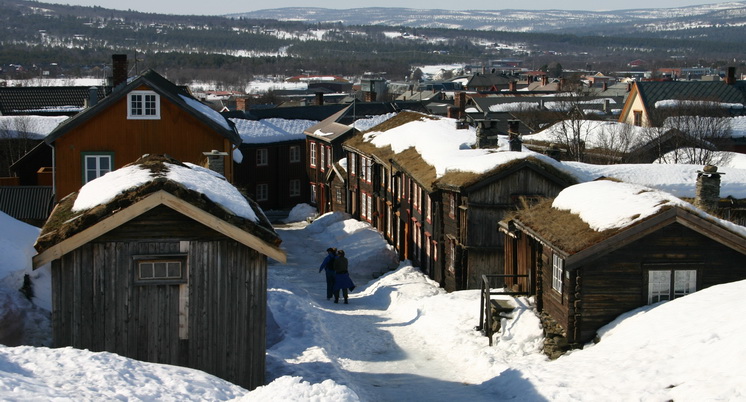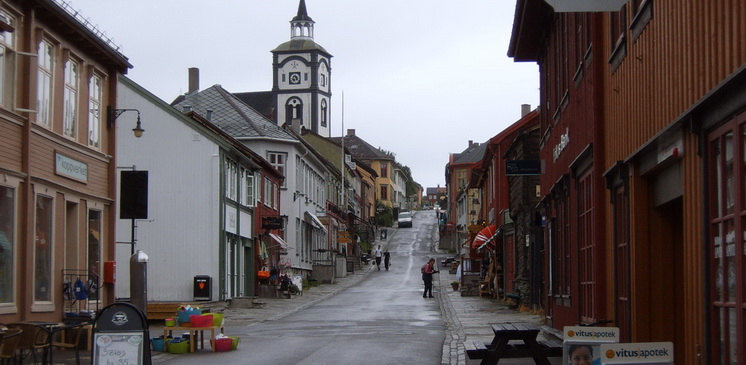Mining town of Røros – part 1

The origin of the town and its mining past date back to the first half of the 17th century. The legend of finding copper says that farmer Hans Olsen Aasen stumbled over a piece of copper ore while hunting reindeer. Today, the city centre is said to be located on that memorial site.

Røros is the coldest place in Norway, and with a temperature record of -50.4 ° C it is one of the coldest inhabited places in the world. This is due to the altitude of about 600 metres and the continental climate. The area is separated from the coast by a mountain range, so there comes no air from mild latitudes. As one of the few mining towns in the world, the town and surroundings of Røros have been included on the UNESCO World Cultural and Natural Heritage List.
A brief history
Copper ore was discovered there in 1644 and the following year the first smelting furnace began to be built. The Danish-Norwegian king granted mining companies privileges to mine, thus promoting the emergence and flourishing of copper mining in a remote area with harsh natural conditions.

The settlement arose along the Hitterelva River which provided energy for ore processing. In 1678 and 1679 the town was burned down by Swedish troops. The inhabitants rebuilt the town and 80 wooden houses from the end of the 17th century have been preserved to this day. Their blackened wooden facades still give the town a medieval character. Before the canal between the towns of Fermunden and Røros was built in 1764, the area was extensively deforested. Today’s stone church built in 1784 replaced the old wooden church from 1650.

In the first half of the 19th century, the price of copper fell, and this resulted in two famines. In 1824, chromium began to be mined there. In 1877, Røros was connected to the outside world by rail, and a little later the miners built the Kuraas hydroelectric power plant to supply electricity to the mines. In 1936, the Prince Olaf Mine was opened and it was exploited until 1972. That year, zinc mining began in Legruvbakken, however, after several lucrative years, prices fell so that in 1977 the company was forced to close down the mines. The mines in Røros were of Norway’s most important mines for more than 250 years. In the years 1644-1977, more than 100,000 tons of copper were produced and 525,000 tons of pyrite were mined.
The cultural heritage of the mining town of Røros includes:
- The town, built entirely of wood, shows how the way of life, mining and transport were adapted to the cold mountain area. There are about 2000 wooden single-storey and two-storey houses in the town, which have preserved their atmosphere of old times since the time of mining and mining life. Visitors can stroll through the narrow streets with the illusion of a slightly different time. The entire history of the town and mining is shown in the local museum. The main building of the museum is the reconstruction of the furnace from 1888.

- Industrial and cultural landscape – the landscape was completely changed by mining activities. Extensive mining activities below the surface are evidenced by huge heaps, large deforested areas, numerous dams, wooden canals and roads. You can visit the Nyrget Pit (1650) and the Prince Olaf Mine (1936), which houses the Bergmanns Hall, now used for concerts and other occasions.
- The old building of the “Femundshytten” furnace in Engerdal.
- The winter road, which is between the towns of Røros and Falun and consists of a number of lakes, rivers and streams, was used from November to May.
Source: www.lomyatezba.cz
